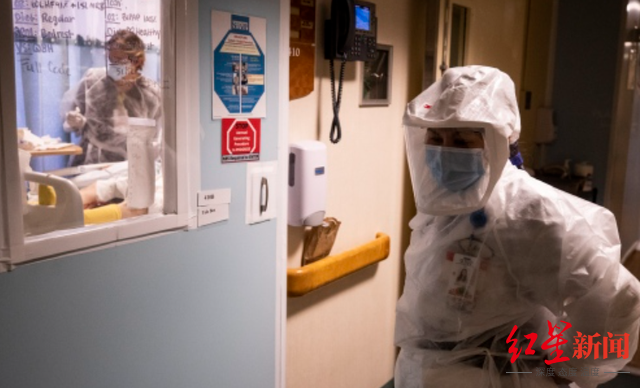In the past few months, a rare tropical infectious disease has suddenly appeared in several non-tropical regions in the United States, including Minnesota, Kansas and Texas. Since the first patient died in Kansas in March, the mysterious disease has infected four people, two of whom have died, including a child.
According to reports, all four patients were infected with a bacterium called "Burkholderia pseudonesitis", a disease caused by this bacterium also known as "rhinoderma", with symptoms including non-specific symptoms such as cough, shortness of breath, weakness, fatigue and nausea, which are easily misdiagnosed and have a high mortality rate. The bacteria are most common in tropical regions such as Thailand, Malaysia, Singapore and northern Australia, where they are mostly found in soil and contaminated water.
However, how exactly it appeared in the central United States has become a difficult mystery. Because in general, Americans infected with this type of infectious disease have a history of international travel, but due to the NEW CROWN outbreak, almost all affected families have not been abroad.
Surprisingly, epidemiologists, after months of painstaking investigation, found that the "culprit" turned out to be a bottle of fragrance spray imported from India.
Four people were infected in four states
The source was a bottle of incense
The U.S. Centers for Disease Control and Prevention (CDC) issued a health alert in June after three linked cases emerged in Kansas, Minnesota, and Texas. CdC began working with state health departments to try to figure out exactly how these people were infected.

A ward in a hospital in the United States
However, Jennifer McQueston, the epidemiologist in charge of the investigation, said the clues they tracked disappeared completely in Kansas. The team took a hard look at everything an infected person might be exposed to — personal care products, lotions, soaps, food, vitamins — but found nothing. "It's really like a fishing trip, we don't have any early clues to guide the direction of the investigation." McQueston said.
In July, a patient in Georgia died of anticoid epistaxis, and genetic testing results linked to three other associated cases previously identified. This chain of infection has so far led to the infection of four people in four different states, two of whom have died. The CDC team stepped up its investigations and examined all items that could be the source of the bacteria, but even then, no conclusive evidence was found. "At that time, they had already tested hundreds of samples and it looked like there was no way out." McQueston said.
With the idea of a last-ditch effort, the investigative team conducted a re-examination of the last infected person's residence in the middle of this month. This time, they took a new sample from a bottle of fragrance. Test results released this week showed that the sample had a positive PCR result for Burkholderia prosthematodyces.
An aromatherapy spray that discovers deadly bacteria
After months of "headless fly" investigations, they finally found the "culprit" that triggered the cross-state contagion — "Better Homes & Gardens Lavender & Chamomile Essential Oil Infused Aromatherapy Room Spray with Gemstones." According to the CPSC, it is an aromatherapy spray from India with a total of 6 scents. In February this year, it began selling at 55 Walmart supermarkets and online stores in the United States for $4. Currently, Walmart is recalling 3,900 bottles of this type of spray.
CDC: Don't open the bottle
"Gems" or culprits
The CDC team recommends that consumers who have purchased the aromatherapy spray stop using it immediately, pack the bottle in a transparent zipper bag, put it in a cardboard box, and return it to any Walmart store. CDC also warns against opening the bottle and not trying to throw it away or dispose of the spray without permission. The CDC said the bacterial gene profile detected in the bottle was similar to that of common strains in South Asia. However, the CDC still does not know which ingredient in the fragrance is the source of the infection, but the "gem" component has attracted the attention of experts.
Centers for Disease Control and Prevention (CDC)
McQueston explains that if the rocks are collected from an environment with bacteria and the rocks are not sterilized before entering the production line, it is possible to carry germs. It's also possible that another ingredient was contaminated, with the rock forming a small microenvironment in the bottle that allows bacteria to grow inside. So while it's uncertain how important these stones are in it, it's definitely unusual to put them in perfume bottles. So she thinks that's something the team needs to focus on.
"That's why we think this information needs to be published immediately, although we're still waiting for the sequence confirmation results to prove that what was in the bottle matched the patient from Georgia." But the positive results of PCR prompted us to speak out in the first place. McQueston said. So far, cdc has successfully linked this strain of bacteria to infected people in Texas, Kansas and Minnesota. Now, an investigation is underway to investigate whether the brand's other flavors of fragrance have the same risk.
Red Star News reporter Xu Huan
Edited by Guo Yu
(Download Red Star News, there are prizes for the newspaper!) )